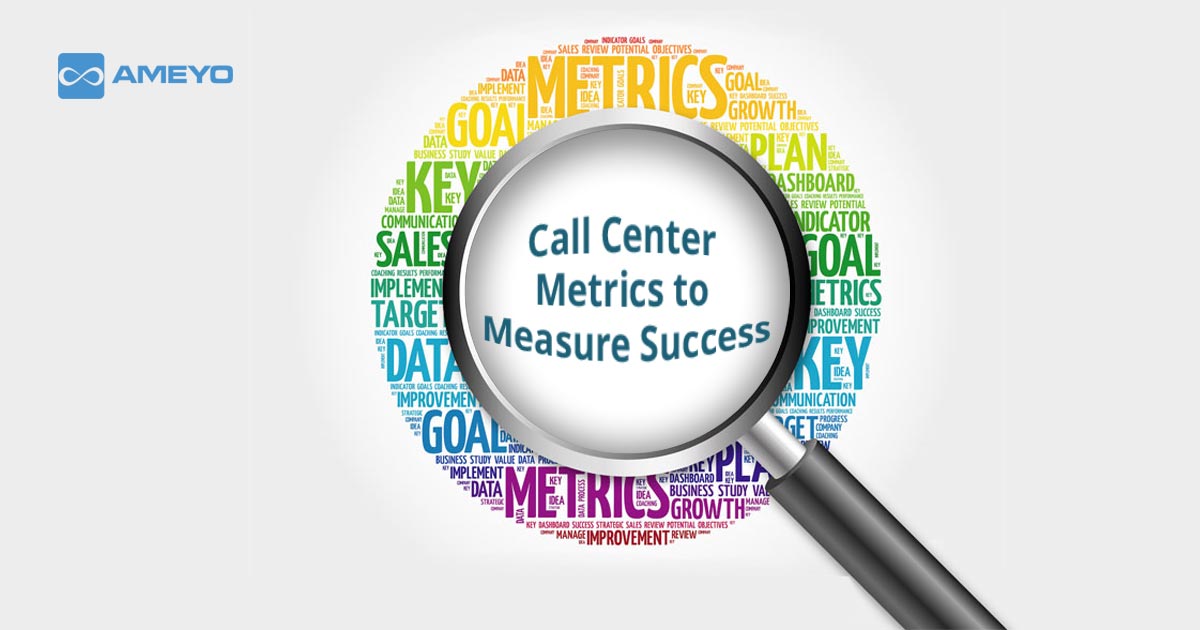As a call center manager, you are responsible for meeting team goals and meeting the expectations of the management. To do that, it is important to identify the metrics that are relevant to your industry and the organization.
In this article, I have tried to list down the key call center metrics that you should track to be successful:
First Call Resolution (FCR)
First call resolution means solving the caller’s (customer) query the first time they call. In case of FCR, the call center agent is able to answer the customer’s issue in the first go itself i.e. without having to forward the call or a callback. The FCR is a direct indicator of customer satisfaction. The faster you are able to satisfy the needs of the customers, the happier they become. Having good first call resolution has many benefits such as:
- Customer Satisfaction: If a customer gets the answer to their problem at the first point of contact then that will make them appreciate the company and lower their chances of defection. On the contrary, if the customer has to wait for long or transferred multiple times without a proper resolution, then that makes them unhappy and they switch to competitors.
- Cost Saving: A low FCR means that you have more number of repeat callers. It also means that your agents have to make follow-up calls to the same person again and again. This can slow down the operations and hamper the productivity, especially in a highly busy call center.
- Higher Agent Satisfaction: When the agents have to repeatedly deal with frustrated and angry customers, it takes a toll on their morale. It also leads to decreasing levels of customer service and thus, unhappy customers. To break this vicious cycle, it is important to train and empower the agents to be more confident and well-equipped while on a call.
Average Handle Time (AHT)
Average handle time is the total time that a customer spends from initial call/chat/email/social message until their issue is resolved. AHT is inclusive of any hold time, talk time and related tasks that follow the transaction. The formula to calculate the Average Handle Time is:
AHT = (Total Talk Time + Total Hold Time + Total After Call Work) —————————————————————————————— Total Number of Calls Handled
This is an important metrics for the call centers to decide on the staffing levels. Moreover, a direct impact of having a low AHT is on the productivity of the agents. Low handling time means the agents can take more calls and thus, fewer customers will be waiting in the queue. But, the key is to maintain the right balance. If care is not taken, the agents might hurry to end the call, without resolving the customer queries. This will negatively impact customer satisfaction and will earn a bad reputation for the company.
Service Level Agreement (SLA) or Response Time
SLAs and response time are the most fundamental metrics when it comes to call centers. Service level is defined as “X percent of contacts answered in Y seconds,”. They provide information about the accessibility of the call center to the customers, the number of agents required to efficiently handle the customers according to the set standards. Also, by observing this data, the call center managers can draw a comparison between the service levels of their call center to the competitors.
Customer Satisfaction (CSAT) Score
Customer satisfaction is the end goal of any customer-centric organization. There won’t be many who have not understood that there is a direct relationship between customer experience (CX) and customer satisfaction. Once you understand the importance of customer experience, it becomes easier to take the right steps to improve it. For a call center, customer satisfaction holds great importance as a metric for its success. But, not all call center managers are well trained to measure it effectively. Some of the ways of measuring customer satisfaction are via a survey or taking customer feedback at the end of the call.
The means of taking the customer survey has evolved over time. Earlier surveys were sent through the post. But, now with the advancement in technology and the world becoming digital, other options are also available – IVRs being one of them. The advanced IVR systems allow the customers to punch in their feedback at the end of the call. Similarly, with omnichannel communication and artificial intelligence, it is possible to gauge customer satisfaction levels even on email and live chat.
Accessibility of Self-service Channels
To truly achieve operational efficiency, a contact center looks to divert the mundane and basic queries to a self-service channel – IVR or live chat. But, are these channels actually useful or your customers are still calling up the agents to seek help? That is one other metric that is important for a call center to deliver an omnichannel customer experience. It is important to not just monitor the number of customers whose first point of contact was through a self-service, but, to actually check how many customers end their journey on these channels. Because, for instance, a customer connects to your IVR and after spending some time on it, needs to be connected to a live agent. In this case, the IVR as a self-service tool has failed.
A good self-service channel is the one where the customer begins and ends her/his journey on the same channel, without the interference of a live agent. If such a pattern is being observed, then, it is time for you to look into your IVR setup and make the necessary changes for it. There has been a trend of decreasing customer-agent interactions with the customers looking for self-service options. Thus, it is important to closely monitor the accessibility of your self-service channels to deliver a holistic yet enriching customer service experience.
Conclusion
These are just the key metrics to measure the health of your call center. You can always identify and monitor other metrics which are the right fit for your business goals. An easier way of doing that is by deploying a call center software which is packed with all these call center analytics and reporting features along with other tools to further enable your call center managers and agents to serve the customers in a better manner.
Explore More: How to set up a Call Center


